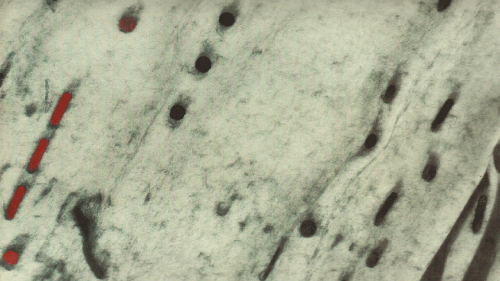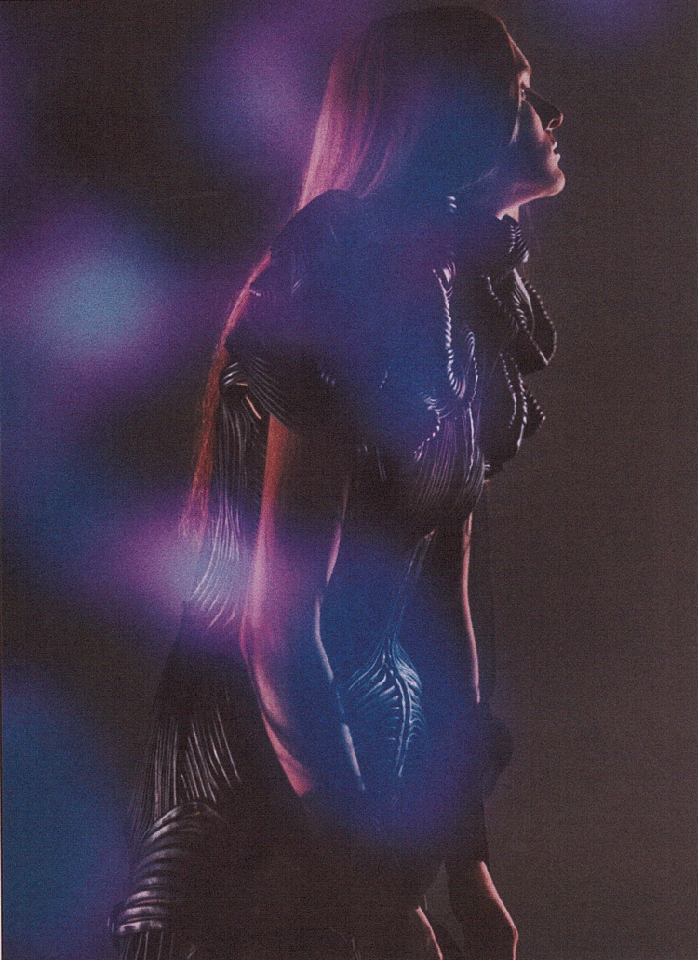In today’s commercially-driven fashion industry, where everything looks picture-perfect, beautiful and consummately finished, it seems as if control banishes serendipity. The wheel of the fashion world is spinning faster and faster, leaving hardly any time to explore, make mistakes, or experiment. Taking chances can result in the most unexpected and surprising designs. And, serendipity leads to amazing results! The designer’s task – to always think of something that has not yet been done – urges the designer to search for more and more radical approaches. The innovative use of materials, for example, is not limited to traditional apparel, but may trigger a complete reinvention of the conventional practice. By focusing intently on the process rather than the end result, unpredictable, new forms may be unveiled. Alternatively, the manipulation of fabric through the development of free-spirited pattern cutting, often results in designs that re-define the way clothes can be worn.

In this context, serendipity means a provoked situation in which you don’t know the outcome, but you do know that it is going to be creative and aesthetically beautiful in a surprising sense. A number of designers are pursuing this approach. The most startling example of serendipity in fashion design is that of Hussein Chalayan. How much of the accidental and unexpected can we take? Are garments made under conditions that allow an element of chaos during the design process still wearable?
Innovative engineering challenges preconceived notions of what clothing means. The end products might simplify a complex idea or they might be widely conceptual. Some will be so radical or distorted that the designers are taking a commercial risk. Whether the designs discussed below are beyond contemporary trends (Hussein Chalayan / Iris Van Herpen) or take up and manipulate street-style elements in order to produce serendipity (McQueen), the clothing that results from this crucible represent a challenging expression of beauty and are certainly cerebral. Many clothes are astonishingly beautiful.
The designs still represent a significant niche market. The sincerity of the designs reveals their cultural importance; their semiotic expressions; and their intellectual, but uncontrollable approach. The works across media are intended to blur the borders between fashion and art and to produce uncanny results; their authenticity is not only apparent when the garment is touched. Serendipitous design gives us the question mark and the explanation point at once, but seldom in this very order. Serendipitous design needs more attention than we usually give to our everyday clothes, but will make its statement even clearer when it is convincingly worn. It would be a shame to style it down.
Some of the most impressive concepts of serendipity – from historical fashion moments to newcomers in the field – are featured here for your consumption and enjoyment. As in the questioning of and the search for meaning within fashion, the emphasis lies in the semiotic; the dress works as a way to experience the world. These conceptual clothes are the key to experimentation, and they are also the experiment in itself.
Hussein Chalayan – Leader in the field
Hussein Chalayan is most famous for his unconventional work. Recently dubbed by Vogue as ‘fashion’s resident mad scientist,’ the Turkish-Cypriot designer is highly interested in cultural theory and identity. He perpetually reflects and questions society throughout his challenging collections. Chalayan’s conceptual work includes the meeting of culture with aesthetics, technology, and phenomena such as weather patterns. As Chalayan stated in an interview with Designboom in April 2006, ‘My work has become more and more cross-disciplinary. The evolution is using other disciplines to express my ideas, but these are to result in unagitated end products. I like to design simple things that are not basic. I’d say I’m natural, quite opinionated and that I don’t like to stand out too much’
In 1993, Chalayan’s graduate collection ‘The Tangent Flows’ caused a sensation. Inspired by a story about the Cartesian world view written by the thoughtful designer himself, the collection consisted of silk dresses Chalayan had buried with iron fillings in a garden and unearthed six weeks later. What appeared were decomposed, rotten dresses showing earthy stains in pure rusty red. The buried garments, bought and shown by the London boutique Browns, are now infamous. However, the result of this experience was that the deconstructed and hackneyed, ragged and time-worn look was one which was to be seen again in Chalayan’s later work. Strong references to this early experiment came up in Chalayan’s first commercial collection, ‘Cartesia’ in AW1994.

Shelley Fox – Patina as a starting point
Blurring the boundaries between fashion, art, technology and science is also the signature of Shelley Fox’s designs. She is one of the leading women in the field of serendipitous design: her technical experimentations in pattern cutting and the unusual treatment of fabric are both beyond the conventional approach. She has used Morse code communication, sound waves shaping the clothes with invisible heat, MRI studies as well as burnt felted wool in her distinctive collections. Since her graduation in 1996 from Central Saint Martins with an MA in Fashion and Textile, Fox is said to be on the odd side of womenswear. ‘I know I will not be Calvin Klein,’ she told the Independent. ‘But my clothes are not for that niche market of 25- to 35-year-old women; they are about a feeling.’
Her collections concentrate on dissembling the body rather than revealing it, and they celebrate the fabric form and folding. ‘There should always be a personal reason for design; it should come from looking at the world around you and really seeing it,’ said Fox lately in an interview. ‘Research and experimentation don’t necessarily make it into a design in a literal way, but they are part of the process of investigating, understanding context, and questioning what you are doing and why you are doing it.’
For her SS1999 collection, Fox went to Devon to burn her beige elastoplast showpieces. Produced under bizarre circumstances, heat-treated with lasers by a former British steel employee, the collection turned out surprisingly elegant. Surprise seems a serendipity’s streak. On her website, Fox writes: ‘Early development sketches show how geometric shapes were evolving into shapes for the clothing. Large scale draping straight onto the body was developed throughout the collection. Each of the burnt envelopes was produced by hand and sent out with the invite inside.’

Iris Van Herpen – ‘What I create is not intentional in any way.’
Waves are also the inspiration for Dutch designer Iris van Herpen, who has participated for the first time in the Blow Presents Show in London this year.
‘It was about the energy we have around us,’ she explained regarding her radiation wave-influenced collection, ‘Radiation Invasion’ for SS2010. ‘I was inspired by all the invisible radiation around us caused by telephones, Internet, etc. There are millions of waves all going through our bodies. I also find it a bit scary because we hardly know any consequences, and I think we will find out in the near future. “Radiation Invasion” was a translation of my imagination of how different types of radiation will look when visible and how they look while flying around our body. It looks fabulous, and the idea of waves is conveyed by the undulating hand made leather straps. The structured dresses are well made enough to pass as couture. Artist Bart Hess collaborated designing the fabric and texture for the collection. Each three-dimensional, asymmetrical dress is unique, with a fluidity and dreaminess that is so compelling that you can’t take your eyes off it.’
‘I think that, in the future, people will find ways to be able to see radiation which will develop a new dimension apart from the body. Imagine we could attract and reject radiation waves as a magnet. Being beautiful will then get a totally new and more extended form,’ says Iris van Herpen. After internships at Alexander McQueen and Claudy Jongstra, Van Herpen graduated in 2006 from ArtEZ Academy of Arts in Arnhem. She has showed five collections at Amsterdam and Tokyo Fashion Weeks, won the Dutch design Award for Best Product Fashion, Jewellery & Accessories in 2009 and has been spotted and presented in SS2010 by Harrods Launches initiative, a platform to showcase new design talents.

Alexander McQueen – Serendipitous design at its very best
At the same time when Shelley Fox showed her scorched collection, Alexander McQueen was contributing once more to fashion history: as a finale of his SS1999 show, he placed the theatrical model Shalom Harlow on a turning platform. Two robot arms, borrowed from Fiat, used graffiti spray cans to sprinkle on a virginal Alice in Wonderland-ish trapeze dress she was wearing. Harlow, professionally showing dramatic poses, gave a memorable fashion moment never to be forgotten.
The transformation of the white dress into a high-class street-style inspired piece of art was controlled only by the choice of colours used: green, black and yellow. Mixed up to a fresh, quirky pattern, it was serendipitous design at its very best. But most certainly not the end. There are many talented designers working in the field, serendipitously.
Future, be surprised.
kinki magazine
Michael Bader Photography
Musée des Arts Décoratifs, Paris
